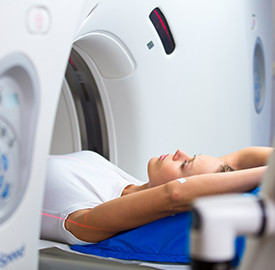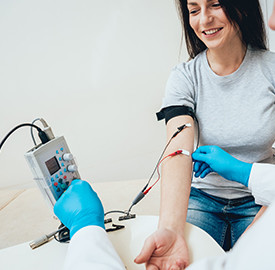conducted by an urologist in case of bladder disorder
The first signs and symptoms are manifested either by a coordination disorder of the gait or by excessive fatigue and imbalance when using the stairs. If you ever experience these symptoms, contact a neurologist and he will refer you to other doctors.
Once the diagnosis is set, other tests should be prescribed by the specialized doctor:
to check for elevated glucose levels

IMPORTANT:
The neurologist is the first to diagnose Friedreich's Ataxia and he or she is the one in charge of referring the patient to other doctors; every test should be prescribed by the specialized doctor.
There is, currently, no pharmacological intervention to cure or delay the progression of FA, although multiple promising pharmacological trials are in progress and new therapies to restore mitochondrial function and genetic therapy are being appraised. Researchers are optimistic that they will soon be closer to understanding the causes of the disease, which eventually will help scientists develop effective treatments and prevention strategies for Friedreich's Ataxia.
http://www.curefa.org/pipeline
However, many of the symptoms associated with Friedreich's Ataxia can be treated or controlled.
To improve the autonomy and capacity of the patient suffering from FA, the patient requires continuous monitoring and regular check-ups with the physiotherapist, psychologist, speech therapist, cardiologist, and the attending physician for a better quality of life.
Different therapies to undertake that
would make living with Friedreich's Ataxia more bearable
Different supplements, medications, and technical aids are prescribed in case of issues such as diabetes, cardiomyopathy, muscular spasms, hearing and vision impairment, and foot deformities.

Important
It is highly recommended to consult with his neurologist, cardiologist and physical doctor to assess his or her capacities and limits before undertaking any therapy and starting any medication.
Useful resourses & Studies




















